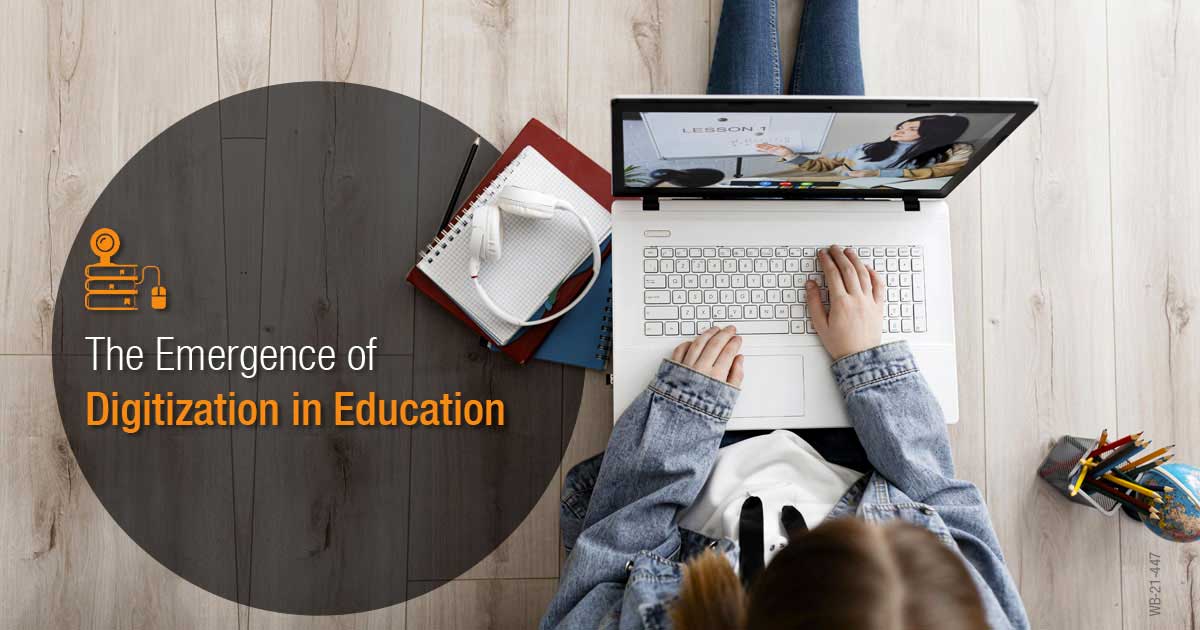

What is Digital Education?
Digital education is the innovative incorporation of modern technology and digital tools to assist the progress of teaching and learning. It is also known as Technology Enhanced Learning (TEL), digital learning, or e-learning. Digital education is the way forward to seeking education through the means of technology and digital devices.
A Brief Overview:
Digital transformation of the country is underway and digital evolution of the economy and society is possible only through digital education. The concept of digital learning is not new and has existed in various forms for many years now, but when the COVID-19 pandemic suspended face-to-face teaching its significance increased manifold. Most educational institutions are adopting digital education as a solution while traditional classroom setup takes a back seat for some time due to the currently prevailing pandemic. Digital education is being seen as an alternative to the traditional education process of chalk and talk.
The emergence of the internet and ever-evolving technology has made learning interactive, engaging, motivating, and handy. Education is not anymore limited to textbooks and classrooms; it has become an amalgamation of technology, innovative learning, and digital content. The internet has become far more affordable and accessible and this shall lead to a greater confluence of digital and traditional teaching methods. The government is actively involved in taking essential steps to come forward with policies that will boost the digital education market in India. The efforts are being made to uplift the standard of digital infrastructure pan India to help facilitate the utilization of innovative educational tools. In near future, digital education like all other sectors will witness noticeable amendments in the way educational institutions function. A plethora of possibilities emerging out of digital education shall empower the education system of the country.
Advantages of the Digital Education System:
Individualized Learning Experience: A major drawback of the traditional education system is that many students experience a lack of interest when they are not able to catch up with the rest of the class. The contemporary digital format allows teachers to customize the study material based on an individual’s learning speed and ability. The impact of educational programs is uplifting with the digitalization of the education system.
Students become Smarter: When exposed to new learning tools and technology students develop effective self-directed learning skills. The digital education system enables students to analyze what they need to know to be able to search and utilize online resources. It plays a significant role in magnifying their efficiency, learning ability, and productivity.
Unlimited Information: The world of the internet is vast and loaded with information, most of which is freely accessible. The emergence of digital education has made it possible for students to explore and use this treasure of knowledge. Earlier, students would rely on limited sources of information, but now thanks to the growing popularity of the digital education system, unavailability of the required information is no longer a barrier in seeking knowledge.
Smart Classrooms: The chalk and talk method is now a thing of the past, and teachers are making use of more tech-savvy methods to help students understand that learning can be innovative and fun. The modern-day classrooms are equipped with a TV or a projector which makes it is easy to shift from a regular classroom session to an interactive digital session. This can make students pay more attention as they are extensively acquainted with the digital world.
Digitally Updated: In a world that is ever-evolving in terms of technology, practices and information can easily become outdated, as there is always something new transpiring. Equipping students with updated information and other subject-related topics is no longer a matter of choice, but a mandatory process. Students spend most of their time on their phones and laptops, so they must be sound technology-wise.
High Engagement Learning: The traditional education system provides limited scope for engagement as its forces at work include limited factors like textbooks, an instructor, and hand-written notes, whereas the digitized education system offers a wide range of choices to learn from. The unlimited availability of resources makes every session extremely innovative and engaging. The interactive and game-based learning sessions gain higher engagement from students.
Ease of Sharing: The traditional education system would heavily rely on students maintaining thick notebooks of hand-written notes containing information provided by teachers in the classroom or acquired through extensive research in the library, but the modern digital education system changes everything. Now preserving and sharing information is just a click away which saves students a lot of time and physical labor.
Accountability in Students: The digital education system incorporates real-time evaluation and system-generated performance reports which increases the transparency of assessment. It enables students to analyze their performance and come up with required solutions on their own. The digital education system brings students out of their shells and makes them independent thinkers who know what to study, when to study and how to study. They no longer remain dependent on their teachers and parents to spoon-feed them with information.
To change not only what we learn, but also how we learn is the need of the hour. The involvement of digital platforms, the virtual world, augmented reality, online libraries, and webinars are the new chalk and board of our education system while search engines have become the new library.
Recent Blogs
IGCSE Full Form
What is the International Baccalaureate?
IBDP Full Form
CIE Board Full Form
CBSE Full Form
Site Designed and Maintained By : Office of Communications, JAIN Group All rights reserved.